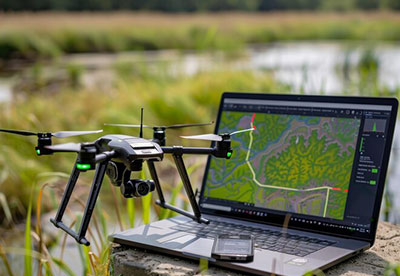The field of network safety is advancing quickly, determined by the consistent complexity of digital dangers. As associations face progressively complicated and dynamic difficulties, there is a developing acknowledgment that conventional ways to deal with Cyber threat Intelligence (CTI) may miss the mark in giving the swiftness and speed needed to distinguish and answer arising dangers.
Artificial intelligence, within its capacity, tries to dissect tremendous amounts of data at speeds beyond human limits, providing a paradigm shift in network protection.
Let’s understand the strategies and key aspects for ushering AI to automate cyber threat intelligence-
User and Entity Behavior Analytics (UEBA)
UEBA plays a vital part in integrating Artificial Intelligence into Cyber Threat Intelligence (CTI). UEBA focuses on checking and analyzing the standards of conduct for both users and clients inside an organization to recognize anomalies and potential security dangers. By utilizing advanced AI algorithms, UEBA systems create behavioral profiles for users and clients, allowing them to detect deviations that may indicate malicious activities or unauthorized access. By recognizing subtle, context-aware deviations, such as unusual login times, data access patterns, or deviations from normal activity, this technology surpasses conventional rule-based systems.
Machine Learning for Threat Detection
Machine Learning has seen a rise of foundation in bracing Cyber Threat Intelligence (CTI) through its application in threat recognition. ML calculations engage associations to go beyond usual mark-based techniques, offering a dynamic and versatile method for recognizing and relieving digital threats. By utilizing the information, these calculations can detect anomalies, empowering a more proactive and responsive network safety approach. One important aspect of machine learning is supervised learning, which lets models learn to recognize and classify known threats by training them on labeled datasets.
Behavioral Analytics
Behavioral analytics supervises the forefront of advancements in Cyber Threat Intelligence (CTI) by providing a nuanced approach to identifying potential security threats. This procedure focuses on examining the behavior of users and clients within an organization’s network to detect glitches that might indicate malicious activities. Unlike traditional security measures that rely on translucent rules, behavioral analytics employs easy machine learning algorithms to institute baseline behavior patterns. By over-monitoring and learning from these patterns, the system can identify deviations that may signify a security incident.
Continuous Learning and Improvement
Consistent learning and improvement comprise the key part of a strong Cyber Threat Intelligence (CTI) methodology. In the consistently advancing scene of digital dangers, static safeguard components immediately become outdated. Continuous learning mechanisms guarantee that AI models used in CTI will always be adaptable, responsive, and effective. By implementing feedback loops and iterative cycles, organizations can incorporate new threat intelligence data and enhance their security posture.
Wrapping It Up
The integration of Artificial Intelligence into Cyber Threat Intelligence marks a pivotal evolution in the realm of cybersecurity. The deployment of AI technologies, such as Machine Learning, Natural Language Processing, and Behavioral Analytics, has not only automated and expedited threat detection processes but has also elevated the overall efficacy of CTI. This synergy between human expertise and machine capabilities has enabled organizations to navigate the complex and dynamic landscape of cyber threats with unprecedented agility and precision.
At Canopus Infosystems, we understand the need to leverage AI to deal with cyber threats while creating websites for businesses. Count on our experienced professionals to deliver high-quality services that exceed your expectations.
2 mins read


















